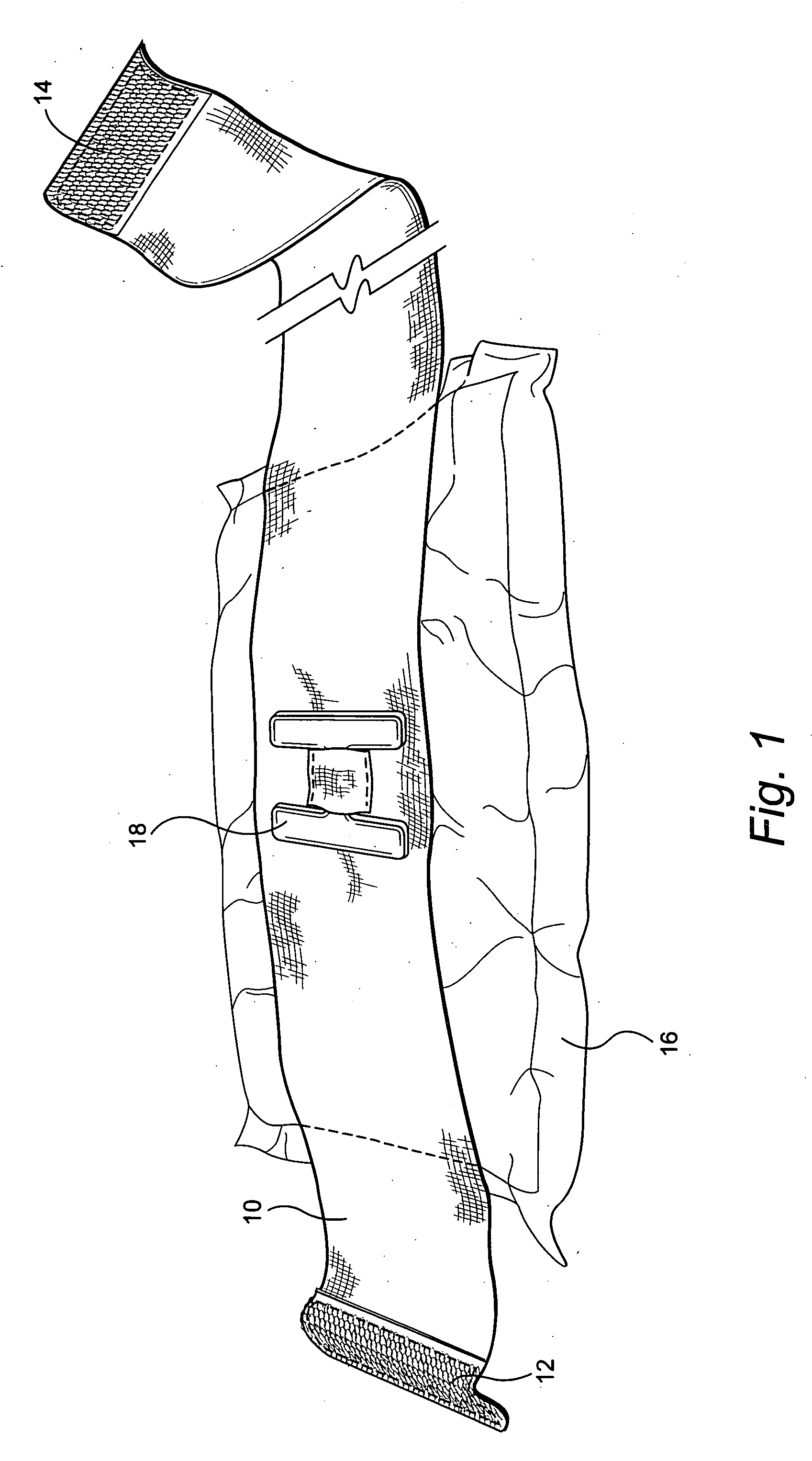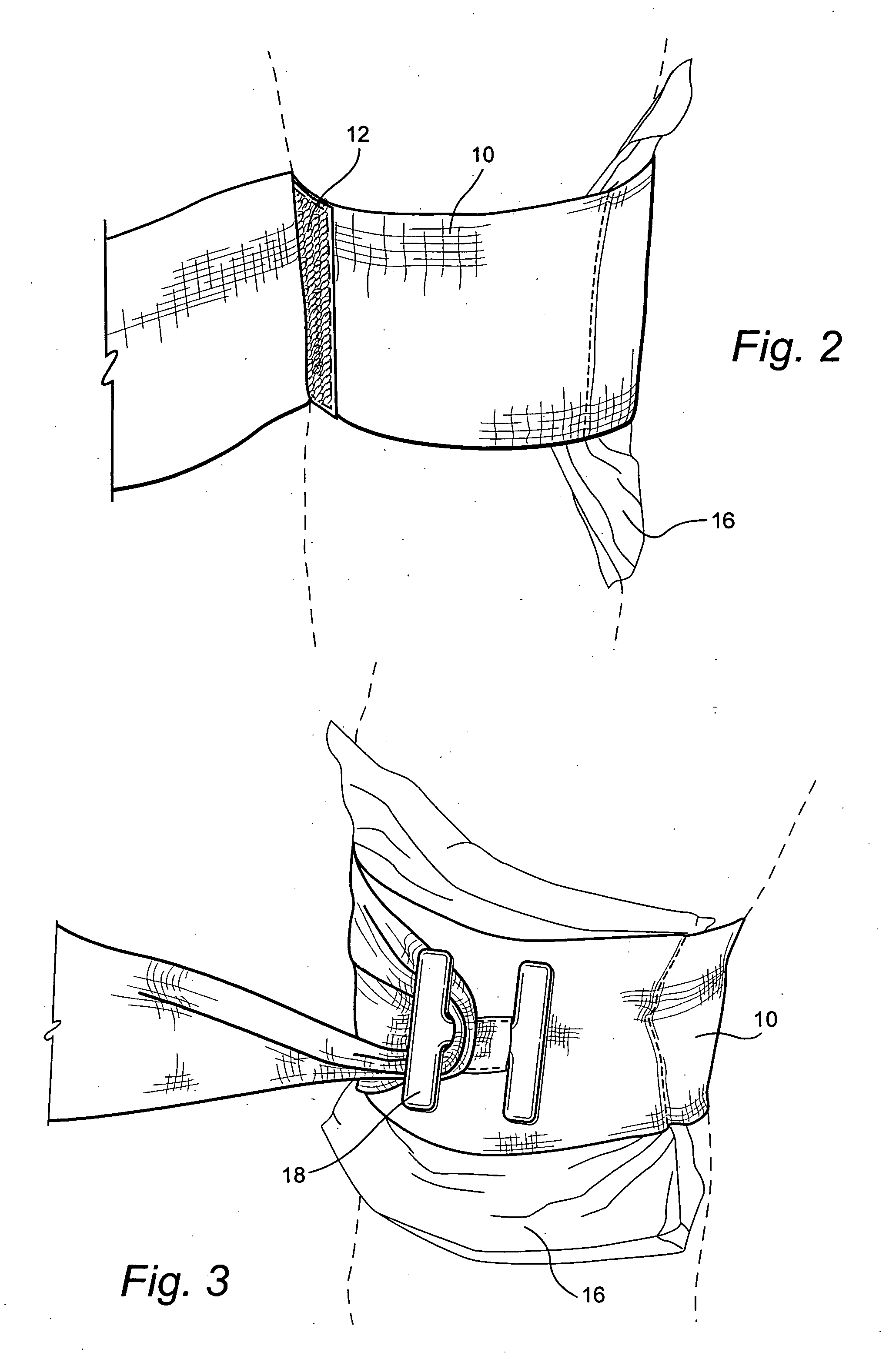Compression bandage with H-anchor tightening means
- Summary
- Abstract
- Description
- Claims
- Application Information
AI Technical Summary
Benefits of technology
Problems solved by technology
Method used
Image
Examples
Embodiment Construction
[0015] The present invention, an elastic bandage, comprises a strip of material 10 in the form of a roll, preferably at least 3″ to 6″ in width, and 48″ to 60″ long. At each end of the material male Velcro® strips 12, 14 are fastened. Near one end of the elastic roll (the ends of the material are defined as the near end and the far end), a high absorbent pad 16, in a preferred embodiment at least 5″×8,″ is attached. In one embodiment, shown in FIG. 1, at the center of the pad, but on the opposite side of the material from the absorbent pad 16, an anchoring point, in a preferred embodiment, an H-anchor 18 is attached. The H-anchor has two vertical legs located transversely across the bandage and the legs are connected by a cross-piece (forming the letter “H”) which may be fastened to the bandage in any manner, i.e., by gluing, by sewing a transverse tab (as shown), etc.
[0016] After the pad 16 is located over the wound, the elastic roll is wrapped once around the extremity. The use o...
PUM
 Login to View More
Login to View More Abstract
Description
Claims
Application Information
 Login to View More
Login to View More - R&D
- Intellectual Property
- Life Sciences
- Materials
- Tech Scout
- Unparalleled Data Quality
- Higher Quality Content
- 60% Fewer Hallucinations
Browse by: Latest US Patents, China's latest patents, Technical Efficacy Thesaurus, Application Domain, Technology Topic, Popular Technical Reports.
© 2025 PatSnap. All rights reserved.Legal|Privacy policy|Modern Slavery Act Transparency Statement|Sitemap|About US| Contact US: help@patsnap.com



